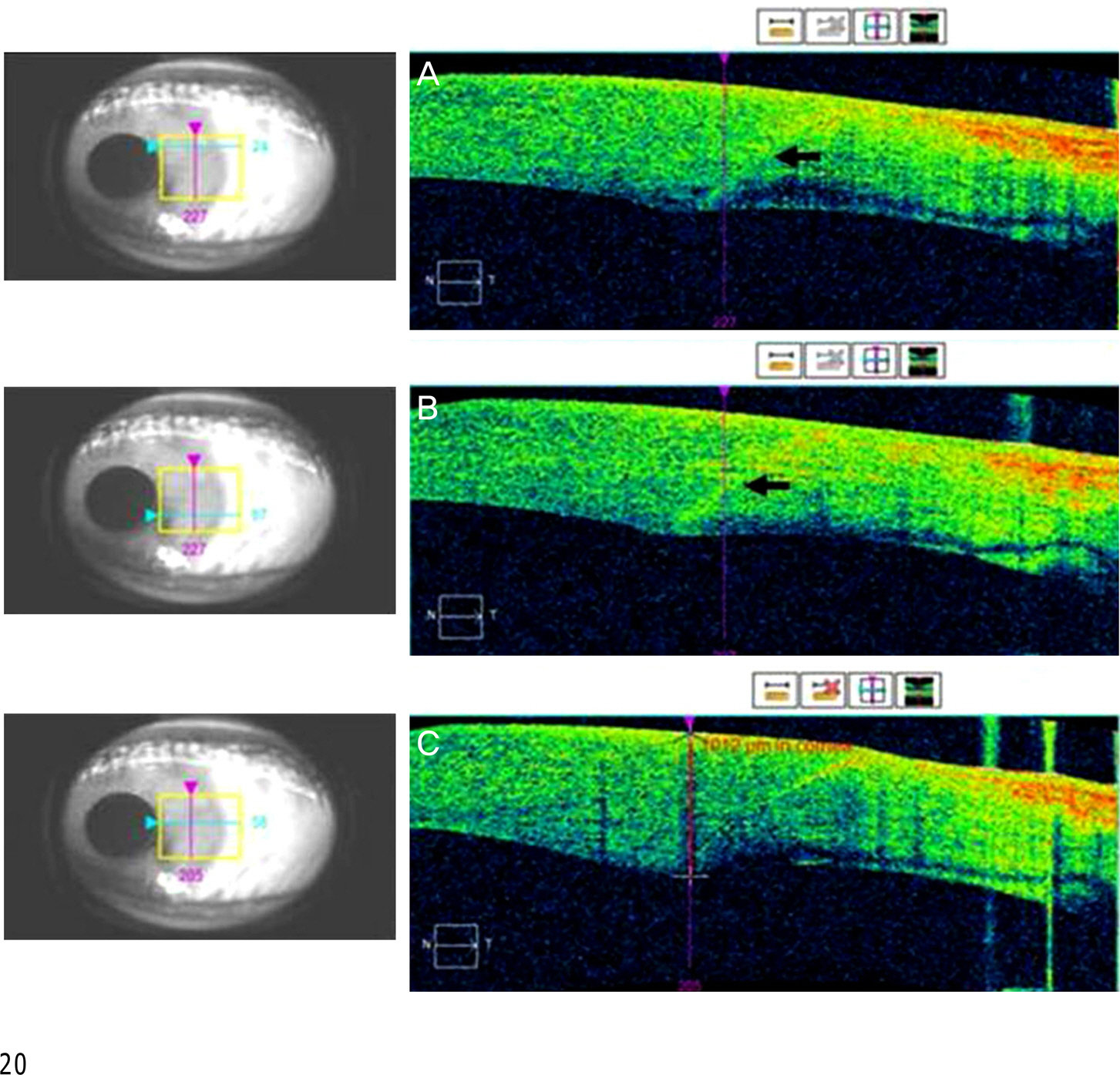J Korean Ophthalmol Soc.
2015 Jan;56(1):19-24. 10.3341/jkos.2015.56.1.19.
Comparison of Clinical Results between 2.2 mm and 2.8 mm Incision Cataract Surgery Using Ellips Ultrasound
- Affiliations
-
- 1Department of Ophthalmology, Dankook University Medical College, Cheonan, Korea. perfectcure@hanmail.net
- KMID: 2216149
- DOI: http://doi.org/10.3341/jkos.2015.56.1.19
Abstract
- PURPOSE
Introduction of phacoemulsification and development of foldable artificial lens has facilitated smaller incisions, even micro-coaxial incisions. However, there have been several studies showing that micro-coaxial incision has no benefit compared with the conventional small incision method. Cases where Ellips ultrasound was used have not yet been reported. Therefore, we compared the postoperative results between 2.2-mm and 2.8-mm incision groups using Ellips ultrasound.
METHODS
Among 49 eyes receiving cataract surgery from March, 2012 to August, 2012, 27 eyes in the 2.2-mm group and 22 eyes in the 2.8-mm group were examined to obtain cumulated dissipated energy (CDE), use of balanced salt solution (BSS), best-corrected visual acuity (BCVA), corneal endothelial cell count (ECC), corneal thickness at center and incision site, and keratometric astigmatism before and after surgery.
RESULTS
There were no statistically significant differences between the 2.2-mm and 2.8-mm groups in CDE (2.5 +/- 2.0 vs. 2.5 +/- 2.3) and use of BSS (188 +/- 127 vs. 138 +/- 43 mL) during the surgery, BCVA (-0.45 +/- 0.62 vs. -0.55 +/- 0.79 log MAR), ECC (-178 +/- 210 vs. -99 +/- 114 cells/mm2), corneal thickness at center (23 +/- 23 vs. 27 +/- 23 microm) and incision site (24 +/- 19 vs. 27 +/- 19 microm) and keratometric astigmatism before and after the surgery.
CONCLUSIONS
A 2.2-mm micro-coaxial incision using Ellips ultrasound showed no statistically significant differences in BCVA, ECC, corneal thickness at center and incision site, and keratometric astigmatism compared with 2.8-mm small incision.
Figure
Reference
-
References
1. Linebarger EJ, Hardten DR, Shah GK, Lindstrom RL. Phacoe- mulsification and modern cataract surgery. Surv Ophthalmol. 1999; 44:123–47.2. Tsuneoka H, Shiba T, Takahashi Y. Ultrasonic phacoemulsification using a 1.4 mm incision: clinical results. J Cataract Refract Surg. 2002; 28:81–6.
Article3. Herretes S, Stark WJ, Pirouzmanesh A. . Inflow of ocular surface fluid into the anterior chamber after phacoemulsification through sutureless corneal cataract wounds. Am J Ophthalmol. 2005; 140:737–40.
Article4. Dosso AA, Cottet L, Burgener ND, Di Nardo S. Outcomes of coaxial microincision cataract surgery versus conventional coaxial cataract surgery. J Cataract Refract Surg. 2008; 34:284–8.
Article5. Hayashi K, Yoshida M, Hayashi H. Postoperative corneal shape changes: microincision versus small-incision coaxial cataract surgery. J Cataract Refract Surg. 2009; 35:233–9.
Article6. Hwang SJ, Choi SK, Oh SH. . Surgically induced astigmatism and corneal higher order aberrations in microcoaxial and conventional cataract surgery. J Korean Ophthalmol Soc. 2008; 49:1597–602.
Article7. Shin KS, Lee JE, Choi SH. Influences on astigmatism and corneal endothelium using two different incision sizes and mode of phacoemulsification. J Korean Ophthalmol Soc. 2013; 54:237–44.
Article8. Capella MJ, Barraquer E. [Comparative study of coaxial micro-incision cataract surgery and standard phacoemulsification]. Arch Soc Esp Oftalmol. 2010; 85:268–73.
Article9. Liu Y, Zeng M, Liu X. . Torsional mode versus conventional ultrasound mode phacoemulsification: randomized comparative clinical study. J Cataract Refract Surg. 2007; 33:287–92.10. Schmutz JS, Olson RJ. Thermal comparison of Infiniti OZil and Signature Ellips phacoemulsification systems. Am J Ophthalmol. 2010; 149:762–7.e1.
Article11. Lee JE, Choi SH. Comparison of clinical results between Ellips and Ozil modes in phacoemulsification. J Korean Ophthalmol Soc. 2011; 52:1161–6.
Article12. Davison JA, Chylack LT. Clinical application of the lens opacities classification system III in the performance of phacoemulsification. J Cataract Refract Surg. 2003; 29:138–45.
Article13. Naeser K, Hjortdal J. Polar value analysis of refractive data. J Cataract Refract Surg. 2001; 27:86–94.
Article14. Kahraman G, Amon M, Franz C. . Intraindividual comparison of surgical trauma after bimanual microincision and conventional small-incision coaxial phacoemulsification. J Cataract Refract Surg. 2007; 33:618–22.
Article15. Lee DS, Joo CK. Effect of incision length on visual recovery and astigmatism in no-suture cataract surgery. J Korean Ophthalmol Soc. 1992; 33:470–5.16. Hu YJ, Joo CK. Surgically induced astigmatism after temporal clear corneal incision in sutureless cataract surgery. J Korean Ophthalmol Soc. 1998; 39:2622–7.
- Full Text Links
- Actions
-
Cited
- CITED
-
- Close
- Share
- Similar articles
-
- Astigmatic Changes According to Incision Length After Sutureless Cataract Surgery
- The Evaluation of Incidence of Hyphema as Early Complication following Sutureless Cataract Surgery
- Surgically Induced Astigmatism According to Corneoscleral Incision Length and Suture Methods After Cataract Surgery
- Induced Astigmatism and High-Order Aberrations after 1.8-mm, 2.2-mm and 3.0-mm Coaxial Phacoemulsification Incisions
- Comparison of Phacodynamic Effects on Postoperative Corneal Edema Between 2.8 mm and 2.2 mm Microcoaxial Torsional Phacoemulsification


